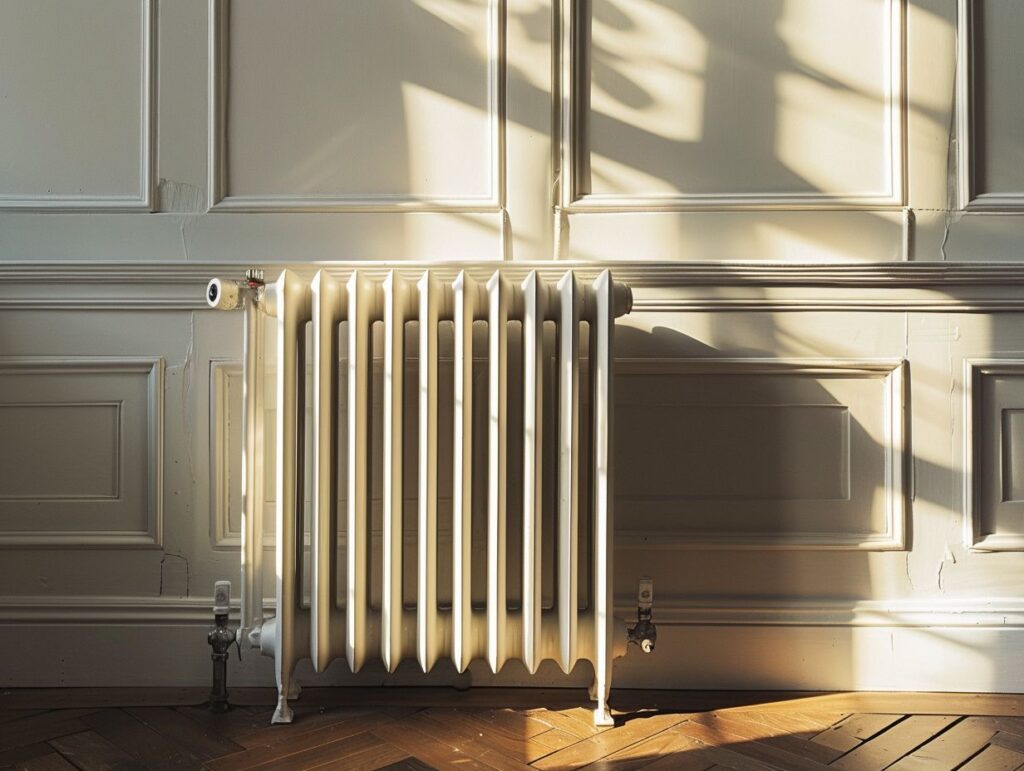Traditional radiators are a popular choice for heating homes, but what factors affect the cost of these heating systems? From material and design options to installation and maintenance costs, there are various elements you should consider when budgeting for traditional radiators.
You will explore the potential savings that can be achieved with traditional radiators, including energy efficiency and cost savings. A comparison of traditional radiators to alternative heating options will be conducted to help you make an informed decision.
You will find tips for locating affordable traditional radiators that fit your budget. Discover how you can efficiently and cost-effectively heat your home with traditional radiators.
Key Takeaways:
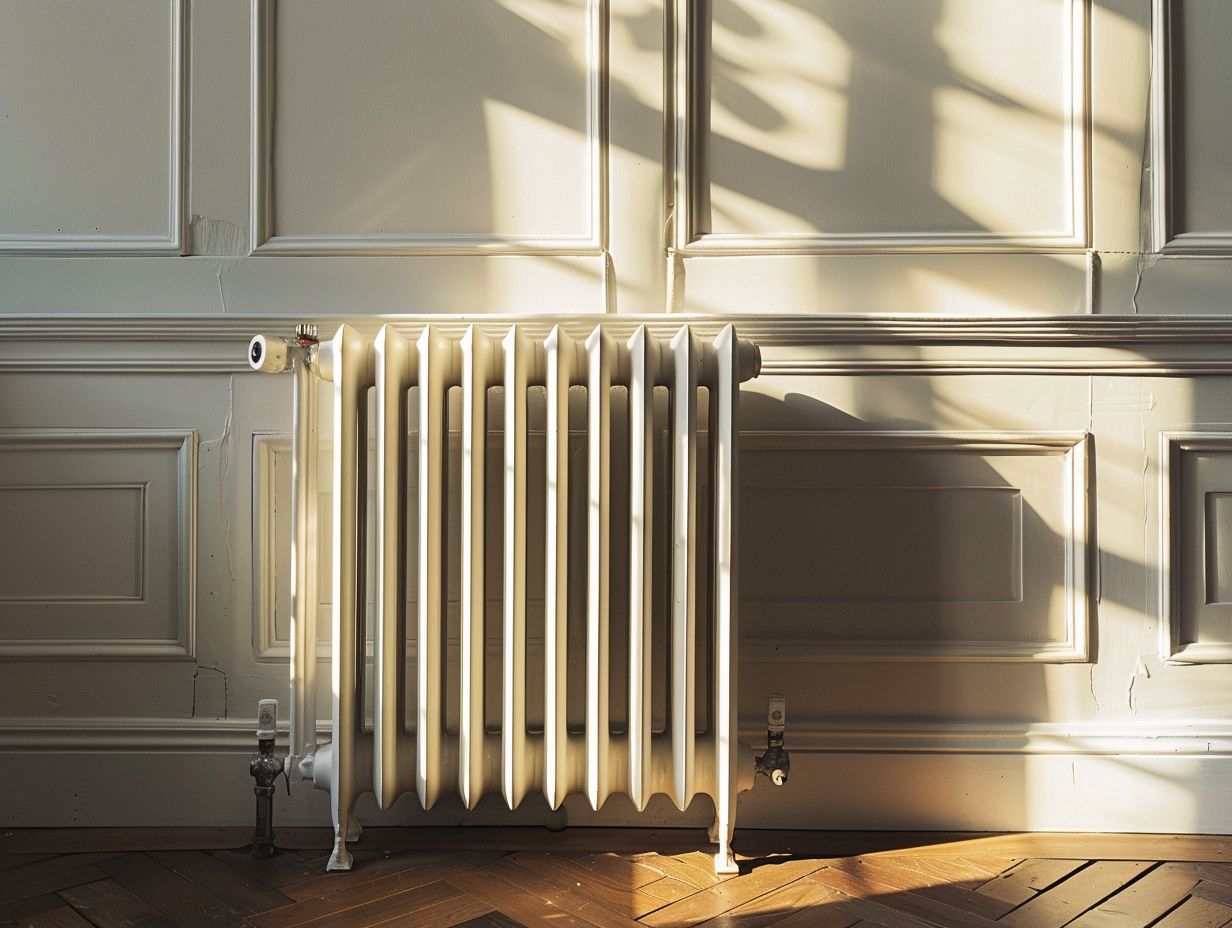
- Traditional radiators are a popular heating option for homes, but their costs can vary depending on factors such as materials, design, installation, and maintenance.
- Despite initial investment costs, traditional radiators can provide long-term savings through their energy efficiency and lower heating bills.
- It is important to compare the costs and benefits of traditional radiators with alternative heating options and to consider your budget when choosing the right radiator for your home.
Factors Affecting the Cost of Traditional Radiators
The pricing of traditional radiators, like cast iron radiators, may fluctuate based on various factors. These factors encompass the intricacy of the design, the quantity of columns, the assortment of styles accessible, the level of finish quality, the chosen colours and sizes, and the duration of the warranty provided by the manufacturer.
Material and Design Options
When considering traditional radiators, the material and design options play a crucial role in determining the overall look, heat output, and durability of the radiator. You have a variety of choices when it comes to finishes, colours, sizes, and guarantee periods to meet your specific needs and preferences.
Your choice of material for a traditional radiator can significantly impact its durability and heat retention capabilities. For example, cast iron radiators are well-known for their robustness and ability to retain heat for extended periods, making them a popular option for those seeking a classic aesthetic.
Additionally, manufacturers offer a wide range of colour customisation options, allowing you to seamlessly match the radiator to your interior decor. It is important to consider guarantee coverage as well to ensure long-term peace of mind and protection against any unforeseen issues.
Installation and Maintenance Costs
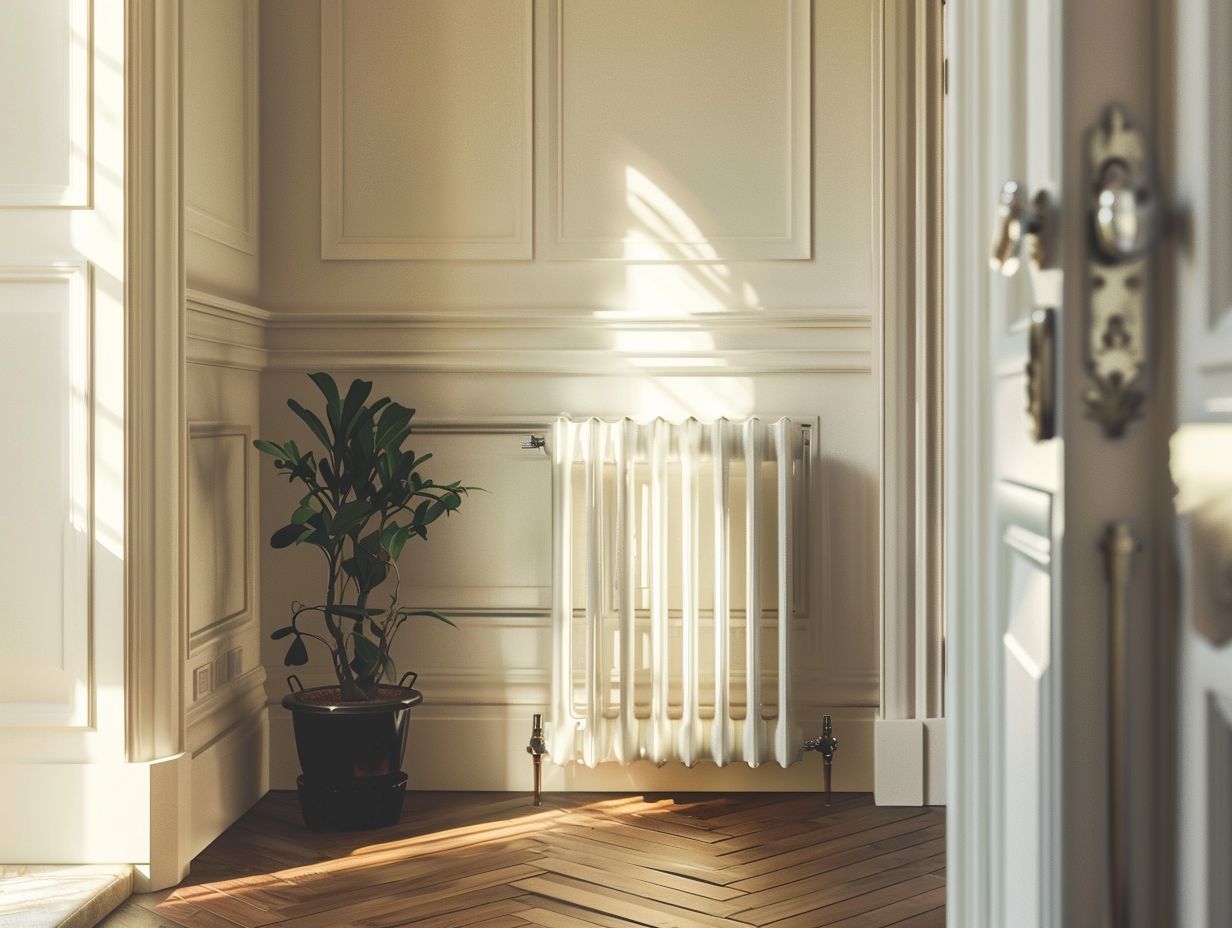
In considering traditional radiators, you should take into account various factors that can affect their installation and maintenance costs. These factors include efficiency, durability, installation complexity, and warranty periods.
Whilst the initial investment for traditional radiators may be higher, they are renowned for their lasting performance and can be viewed as a reliable and enduring investment.
In terms of the installation of traditional radiators, it is imperative to carefully deliberate on the location and placement to ensure optimal heat distribution throughout the space.
Proper installation not only improves the efficiency of the radiators but also extends their lifespan. Engaging in regular maintenance tasks, such as bleeding the radiators to eliminate air pockets and inspecting for leaks, can help prevent issues and maintain their longevity.
Many manufacturers provide warranty coverage for traditional radiators, offering assurance to buyers in the event of any unexpected complications.
The value proposition of traditional radiators lies in their capacity to deliver consistent heat, decrease energy expenses, and contribute a timeless aesthetic appeal to any room.
Potential Savings with Traditional Radiators
When optimising insulation and utilising the substantial mass of cast iron, traditional radiators offer potential savings through their efficient heat store capabilities and heat output ratings. These radiators can retain warmth effectively, reducing the strain on your central heating system and enhancing energy efficiency.
Energy Efficiency and Cost Savings
Maximise energy efficiency and cost savings with traditional radiators by utilising heat calculators to determine the optimal BTU requirements. Consider factors such as Delta T ratings, insulation levels, and window locations that may impact heat distribution and efficiency.
By accurately calculating the required BTU output using heat calculators, you can ensure that your heating system operates efficiently, providing warmth without unnecessary energy wastage.
Delta T values play a crucial role in determining the temperature difference between the water entering and leaving the radiator, influencing its performance.
Proper insulation levels help in retaining heat within the room, reducing the load on the heating system. Strategic window placement can also prevent heat loss, further enhancing the overall energy efficiency of the heating setup.
Alternative Heating Options
Although traditional radiators are still widely used, consider exploring alternative heating options like feature radiators and high-performing modern radiators. These alternatives offer efficient solutions that can enhance or even substitute traditional heating systems.
They are designed to accommodate a variety of preferences and heating needs, offering versatility in both design and functionality.
Comparing Costs and Benefits
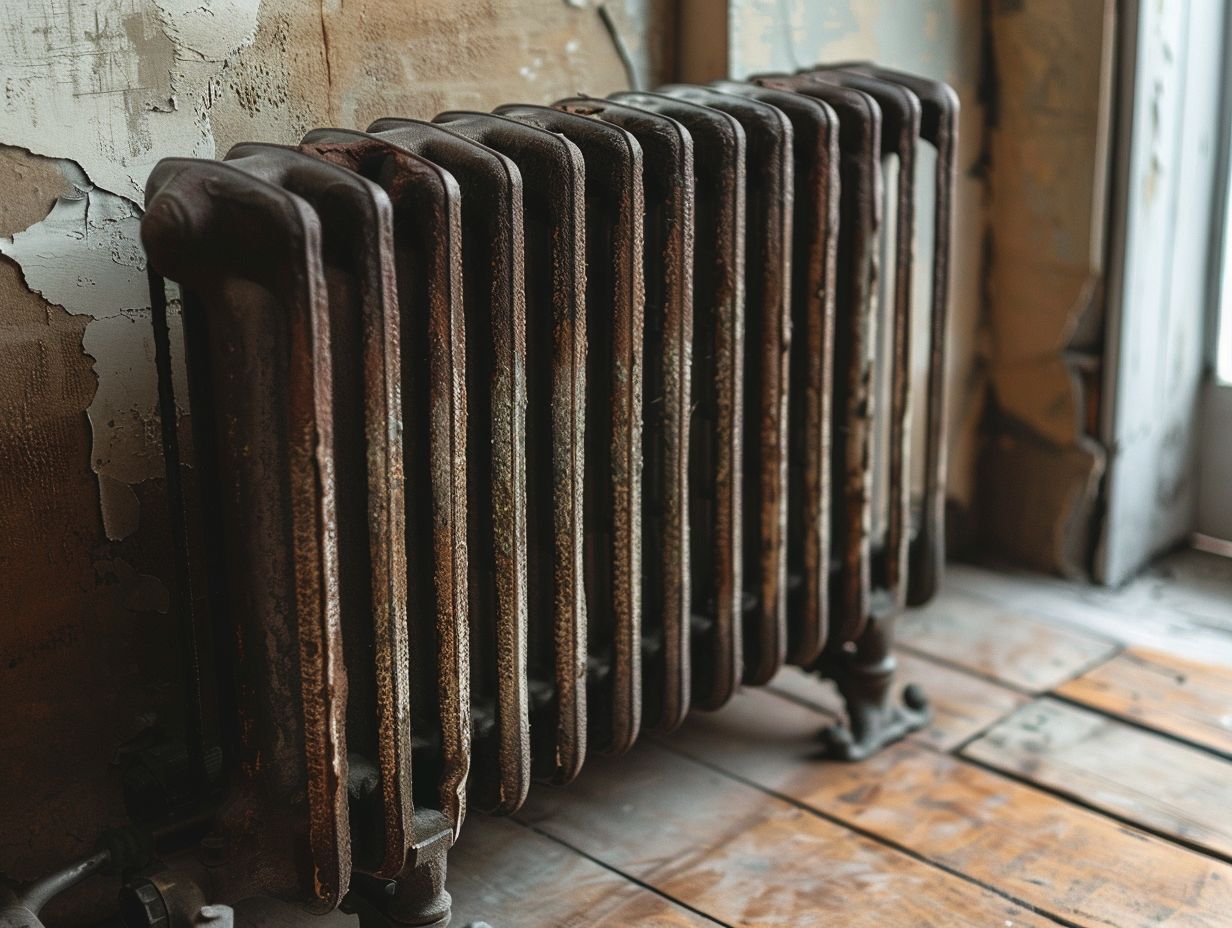
When you assess the costs and benefits of traditional radiators, consider crucial factors like heat output efficiency, the incorporation of modern design elements, and the long-term value they provide as durable and efficient heating solutions. Traditional radiators present a unique combination of timeless appeal and contemporary effectiveness, making them a worthwhile investment.
The efficient heat output of traditional radiators ensures effective warmth distribution across a space, while the inclusion of modern design elements adds a touch of elegance. The resilience of traditional radiators allows them to withstand the test of time, offering a dependable heating solution for an extended period.
With the evolution of technology, traditional radiators now feature sleek and stylish designs that blend seamlessly with any interior decor, enhancing both the visual allure and functionality of a room.
Choosing the Right Traditional Radiator for Your Budget
When choosing the appropriate traditional radiator within your budget, you should take into account various factors, including sale promotions, confidence in product quality, and utilising BTU calculators to guarantee optimal heat output. A detailed guide can help you navigate the array of options at your disposal and make a well-informed decision.
Tips for Finding Affordable Options
When exploring affordable traditional radiator options, consider looking for promotions, sales, or vendors offering free UK delivery to maximise cost savings. Research various suppliers and compare pricing options to find quality traditional radiators that fit within budget constraints without sacrificing performance.
With the diverse range of traditional radiators available, prioritise features that align with both aesthetic preferences and functional requirements.
Contact customer support for information on ongoing promotions or discounts to further enhance cost-effectiveness. Inquire about package deals or bundle offers that may be available for additional savings.
Stay updated on seasonal sales or clearance events to take advantage of opportunities to secure high-quality traditional radiators at discounted prices.
Frequently Asked Questions
What Are the Costs Associated with Traditional Radiators?
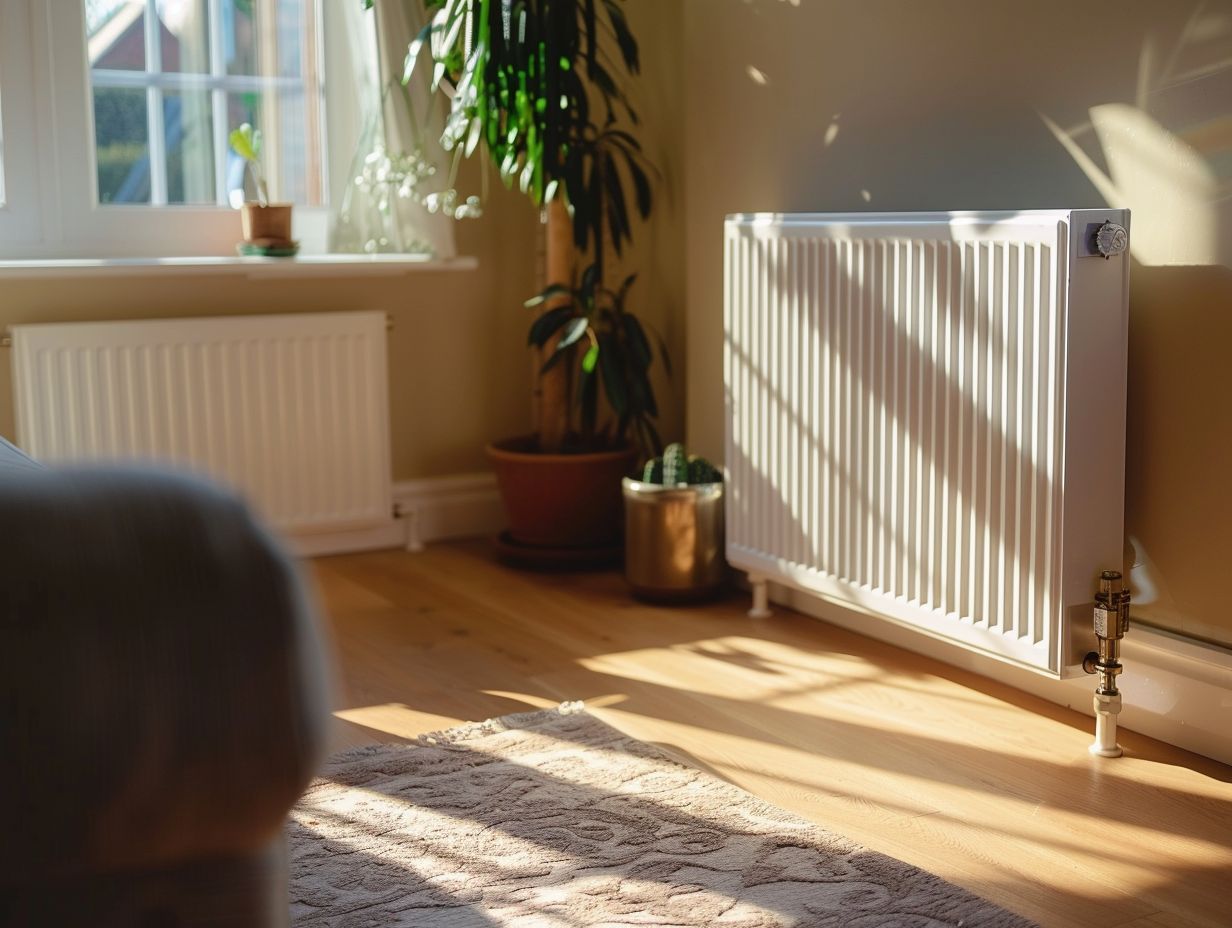
The costs associated with traditional radiators vary depending on factors such as the type of radiator, installation fees, and maintenance costs.
Are Traditional Radiators Expensive to Install?
The cost of installation for traditional radiators can range from $500 to $3,000, depending on the size of the radiator, type of installation, and labor fees.
Do Traditional Radiators Require Frequent Maintenance?
Traditional radiators may require maintenance every 2-3 years, which can cost between $100 to $500 per service. This includes cleaning, checking for leaks, and replacing any damaged parts.
Are There Any Ongoing Costs Associated with Traditional Radiators?
Besides installation and maintenance costs, traditional radiators may also have ongoing costs such as heating bills. However, these costs can be offset by choosing energy-efficient models.
What Factors Can Affect the Cost of Traditional Radiators?
The cost of traditional radiators can be impacted by various factors such as the size of the room, insulation, type of fuel used, and the number of radiators needed to heat the space.
Are There Any Alternatives to Traditional Radiators?
Yes, there are alternative heating options such as electric radiators, underfloor heating, and heat pumps, which may have different costs associated with them. It is best to research and compare the costs and benefits of each option before making a decision.

